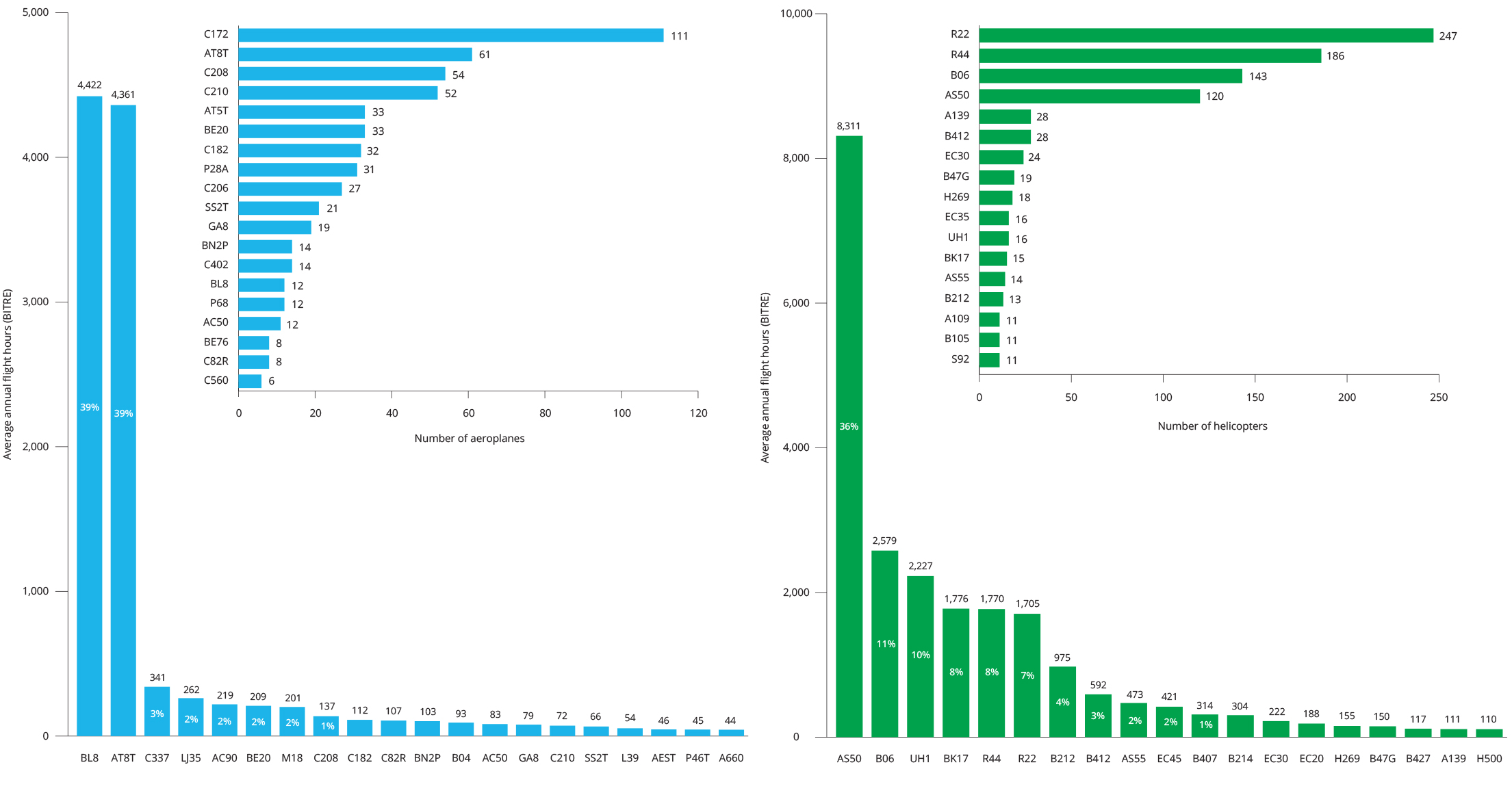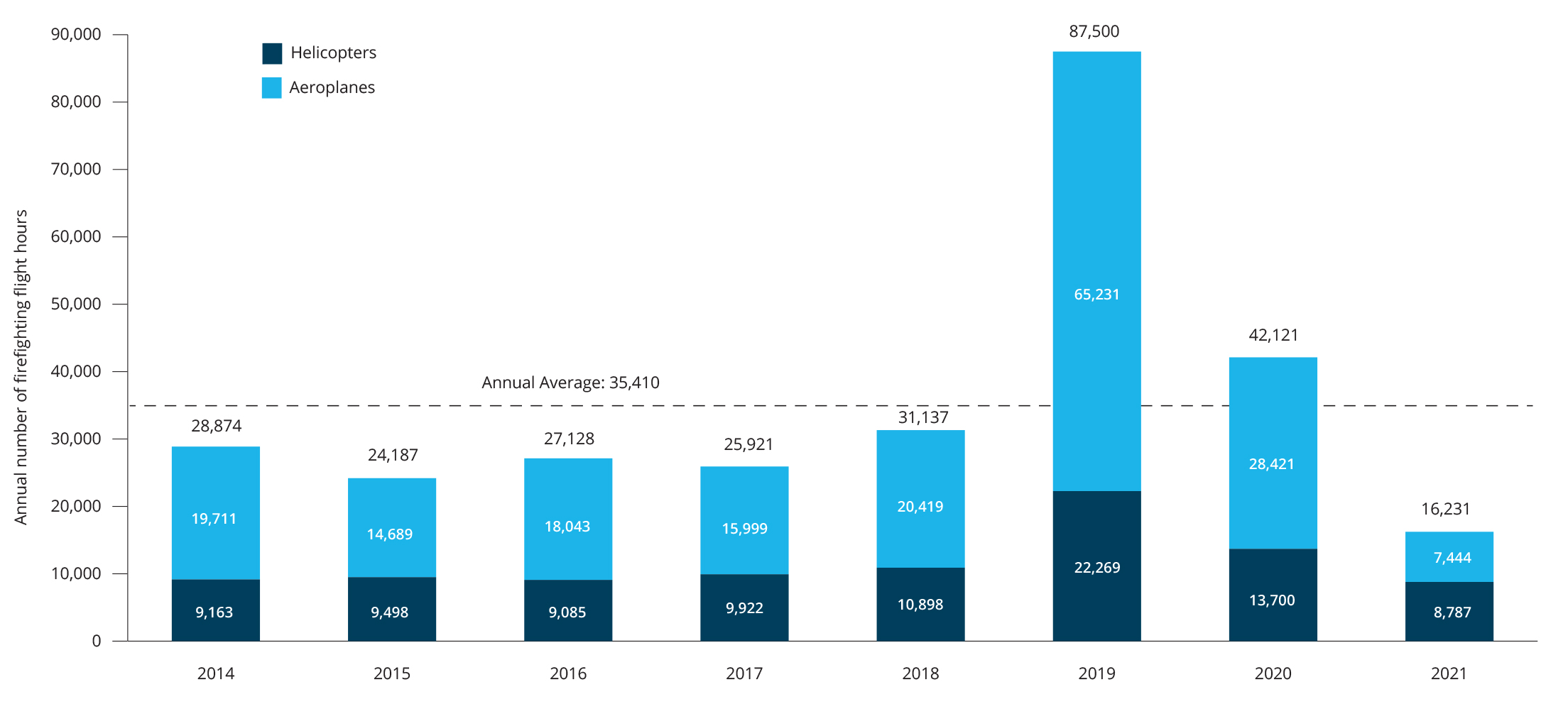Based on current available data*, the breakdown of Air Operator’s Certificates in this sector includes both:
- aerial work - aerial spotting (fire): a maximum of 424
- aerial work - dropping (water and fire retardant): 156 (including 149 doing fire spotting).
Across these AOCs (based on Bureau of Infrastructure and Transport Research Economics (BITRE) firefighting activity from 2014 to 2021) we estimate:
- for aeroplanes: 131 operators with 585 aeroplanes with 31 types/models used for firefighting
- for helicopters: 186 operators operating 992 helicopters with 33 types/models used for firefighting.
*AOC data (2022), aircraft register (March 2023) and BITRE (2014 to 2021).
Analysing the activity within this sector is more challenging. One challenge is calculating aircraft numbers within this sector as aircraft we identify are not always used exclusively for the purposes of firefighting. This includes fire spotting and firefighting activities.
Another challenge was including flight hour data from BITRE only includes VH (Australian) registered aircraft. Any internationally registered aircraft used for firefighting activities in Australia will not have their hours included in the following tables.
Figure 1 identifies:
- for aeroplanes: the American Champion BL8, fire spotting, and the Air Tractor AT-802, firebombing, account for approximately 80% of the firefighting flight hours. With the C337 the next most utilized aircraft for surveillance at 3%
- for helicopters: the Airbus AS350 Squirrel used for firebombing has the highest used at 36%. The next type being the Bell 206 at 11% and the UH1 Huey at 10%.
Please note: these hours were from VH-marked aircraft only. They do not include overseas registered aircraft which is not covered by BITRE. While operators do use aircraft registered overseas for firefighting in Australia, we estimate their flight hours are between 2% for fixed-wing and 6% for rotary-wing.
The hours for this sector are reflective of those during firefighting operations and are therefore completely dependent on the fire season.
The 2019-20 bush fire season or Black Summer saw many parts of Australia devastated by fires including various regions across:
- NSW
- north-eastern Victoria
- Queensland
- South Australia,
- Western Australia
- Australian Capital Territory.
Firefighters used aircraft and equipment from Canada, New Zealand, United States and Singapore to support these efforts.
The 2019 fire season saw the total flight hours increase by approximately 250% from the annual average of flight hours from 2014-2021. Helicopters account for two thirds of the flying hours.
| Type | Helicopter flights | Aeroplane flights | Total |
|---|---|---|---|
| Flight hours | 23,744 | 11,665 | 35,410 |
| Percent of sector hours | 67% | 33% | 100% |
Source: BITRE General Aviation survey data



